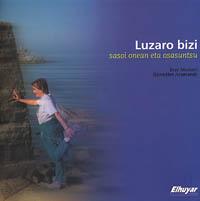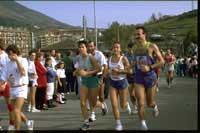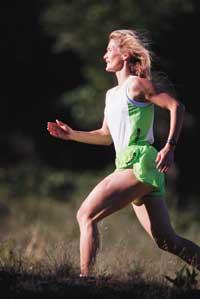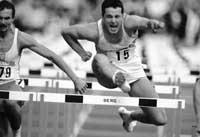Do sports? Of course! But in small amounts
1999/05/09 Kortabarria Olabarria, Beñardo - Elhuyar Zientzia
Sport is game

When the objective of the sport is put into competition and the objective of the competition is put in victory, the natural games that could be developed through the sport become unnatural. And if you want to achieve total performance, you have to devote time to training sessions, often too long. To advance in the sport, today young people perform long and hard workouts. However, it must be differentiated. There are, by their very nature, some sports that force to develop diverse and different activities, that is, that do not require specific training. However, other types of sports require adapted and precise training, since from an early age it is necessary to practice one or another skill. Otherwise, no good results are obtained. For various reasons we will discuss below, these specific trainings can hardly be justified from the point of view of physical and educational development.
At early ages competition sport, both in training sessions and in competition, often produces tense physicals and psychics. In these ages, competitive sport not only has physical limits of performance, but can have problems of coexistence and psychic consequences. It should be noted that this type of sports competitions are organized by adults, so in general there are no spaces of relationship and leisure.
The contents and methods of training must be adapted to the child and the physical preparation must be general, without giving priority to specialization. Specialization will come later, when the child becomes young and so decides.
Miscellaneous damage
It is increasingly evident that boys and girls who play competitive sports suffer more and more injuries. This is because in the tissues of children, which remain undeveloped and due to the growth process itself, many microtraumatisms occur. In most cases these injuries are due to overtraining. Professional and trained trainers know that in times of growth you have to moderate the intensity of the training and that compensation exercises are necessary.
In addition to injuries, overtraining has other consequences that can be more serious. If practiced correctly, it is known to help normal physical growth. When the physical load is excessive it can harm the skeleton and normal growth can become abnormal. However, there is no security in this regard, since the data available are very scarce, although there are some. For example, it is known that children or young people who did weight lifting have extremely high blood pressure. For example, those who have children in collecting stones should consider it.
For the steps of maturity, for the psychological tension of children, it is possible to talk more about the damage that can be derived from training sessions and competition sports that have no place for the leisure needs of children, but neither should the subject leave their account. As it is done at ease, with desire and as a game, sport is not bad for children. It can help make friends, have fun and have a proper growth.
Tips
Therefore, and given the impossibility of excluding sport, the International Federation of Sports Medicine has advised children and young people about their sporting aspirations:
- Before starting the competition sport, all children must undergo a thorough medical examination. In this way, on the one hand, it will be known that children who start in the competition sport have no health problems and on the other hand, the doctor will be able to advise on the appropriate sport for each child and the appropriate training sessions. In addition to the initial exam, it is advisable to set deadlines for specific exams to see if there are consequences of overtraining.
- In addition to sports work, the coach has a pedagogical responsibility. Therefore, you should know the biological, physical and social problems related to child development.
- The coach must know the circumstances of each child, take into account their abilities and offer them the most appropriate options. The overall development of the child is above training and competition.
- If the training has a pedagogical character, it will be good for the development of the child. If training is based on performance, for health and development reasons, it does not work. This last council also serves young people.
- Boys and girls should participate in many sports, so they can choose the one that best suits their nature, interests and characteristics. When done so, there is usually more success and there is no sense of failure.
- In physical contact sports children should not be classified by age, but should be attended to maturity, body size, skill and sex.
- The rules and durations of the competition sessions should be appropriate to the age of the children and the training sessions should be short and well organized. Well-planned training, in addition to optimising activity, reduces the risk of injury.
- Weight lifting and weightlifting, in our case stone lifting, are not recommended until the skeleton grows.
- Long-term careers are bad for children.
Published in 7K

Gai honi buruzko eduki gehiago
Elhuyarrek garatutako teknologia





